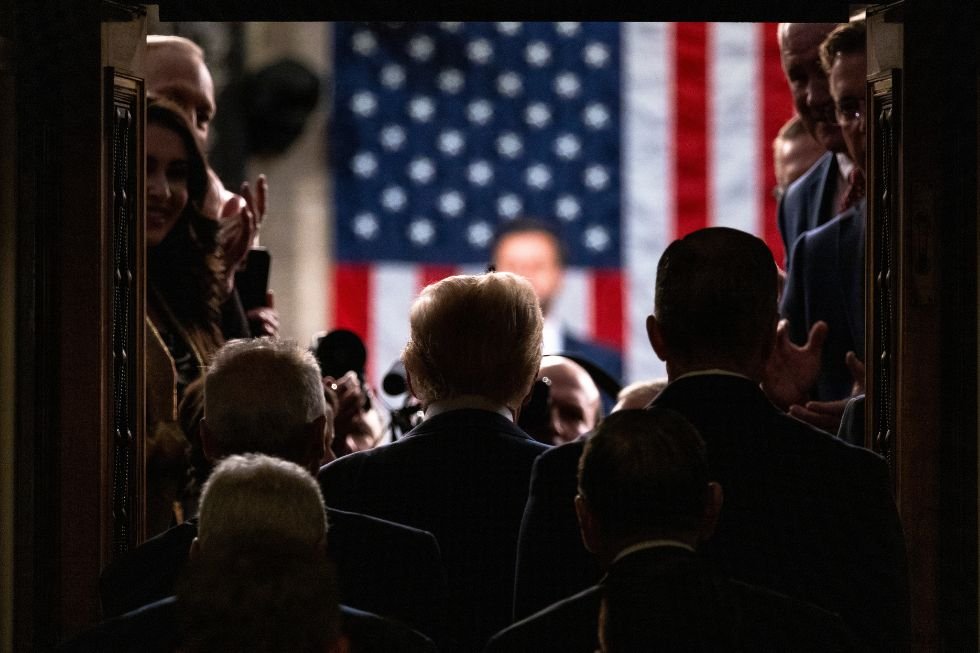In July 2025, US President Donald J. Trump signed into law the “One Big Beautiful Bill Act” (OBBBA), a sweeping piece of legislation that consolidates a wide range of his second-term policy priorities. Passed under budget reconciliation rules with razor-thin Republican majorities in both chambers and Vice President J.D. Vance casting the tie-breaking vote in the Senate, the bill marks the most consequential reconfiguration of US fiscal policy since the 2017 Tax Cuts and Jobs Act (TCJA).
Its passage signals a return to supply-side policymaking on an expanded scale — one that lowers taxes, increases defense and border budgets, cuts social spending and aims to reshape the political economy of federal redistribution. Yet behind the campaign rhetoric of “no tax on tips” and “bigger paychecks,” lies a more complex — and deeply contested — economic and legislative reality.
Budget reconciliation weaponized
As in 2017, Republicans relied on the budget reconciliation process to circumvent the Senate filibuster. The Congressional Budget Act of 1974 established reconciliation to match revenue and spending with fiscal goals — facilitating deficit control, not expansion. However, reconciliation has morphed into a partisan tool used to pass ideologically driven reforms with a simple majority. Democrats used it for the Inflation Reduction Act (2022); Republicans used it for the TCJA and now for the OBBBA.
OBBBA began its life in the House in early 2025, following GOP victories in the 2024 elections that gave them control of both chambers. Trump initially advocated for multiple standalone bills, but party leaders opted for a unified package to maximize political capital. The result: a massive, omnibus-style bill that combined tax policy, border enforcement, defense buildup and Medicaid reform — all without any Democratic support. This brand of one-party legislation mirrors the same pattern seen “in the other direction” with the Inflation Reduction Act of 2022.
The reconciliation process imposes strict rules: provisions must pertain directly to the budget, cannot alter Social Security or structural budget processes and must not increase the deficit beyond 10 years. These constraints led the Senate parliamentarian to strip several provisions, including changes to Medicaid funding formulas and limits on student debt repayment. Despite these omissions, Republicans moved the legislation forward with only minimal revisions, setting up a conference between House and Senate GOP members to resolve differences.
The tax cuts
At the heart of the legislation is a permanent extension of the TCJA’s tax cuts, which were originally set to expire at the end of 2025. But OBBBA goes even further: it eliminates federal taxes on overtime pay and tips, significantly reduces estate taxes and introduces deductions for “Made in America” auto loans. While the bill is marketed as a boon to working and middle-class Americans, with promises of “$10,000 bigger paychecks,” independent analyses suggest otherwise.
According to the Congressional Budget Office (CBO), the bill will add over $3.1 trillion to the federal deficit over the next decade, primarily due to the cost of making TCJA cuts permanent. The bulk of the tax relief will go to high-income households. While the Center on Budget and Policy Priorities estimates that families earning under $50,000 would receive an average tax cut of less than $300, and those earning $1 million or more would receive around $90,000, these headline figures risk obscuring meaningful differences within those groups.
A $90,000 benefit is 9% of income for someone earning $1 million, but only 0.9% for someone earning $10 million. Likewise, a $300 benefit amounts to just 0.6% of income at $50,000, but a much more substantial 6% for a family at the poverty line. The relevant measure depends on what one values: relative relief, absolute dollars or who needs help the most.
Similarly, the Tax Policy Center finds that the top 20% of earners (those making $217,000 or more) would receive 57% of the total tax benefits, with the top 5% alone capturing over one-third of these benefits. Meanwhile, the bottom 20% of households — those earning around $35,000 or less — would receive just 1.5% of the total benefit, with an average tax cut of approximately $150.
Modest gains, dubious forecasts from Brookings Institution
House Speaker Mike Johnson has sharply criticized the CBO for relying on static scoring, which he argues ignores the “extraordinary growth” he believes will result from the OBBBA. He cites the CBO’s prior underestimation of the 2017 TCJA — which he claims missed $1 trillion in projected gains — as evidence that the agency routinely fails to capture the dynamic, feedback-driven benefits of pro-growth tax and regulatory policies. Johnson contends that OBBBA goes even further by combining lower marginal tax rates and deregulatory impulses with novel revenue strategies, such as tariffs and data-driven oversight efforts like the Department of Government Efficiency (DOGE). In his view, this policy mix will stimulate job creation, raise wages, increase labor force participation and ultimately shrink the deficit through higher output.
However, independent analyses suggest the macroeconomic effects will be modest. The Joint Committee on Taxation estimates that GDP will be 0.4% higher over the next 10 years under OBBBA, while the capital stock is expected to decline slightly. The Tax Foundation projects a 0.8% increase in GDP and 0.2% rise in capital stock after 30 years. The Penn Wharton Budget Model estimates a 0.7% increase in GDP and a 1.5% boost to the capital stock over the same period.
These forecasts reflect a balance of countervailing forces. While lower tax rates can enhance labor supply and investment incentives, the bill’s reliance on temporary expensing provisions, reduced tax benefits for homeownership and significant deficit financing are expected to blunt long-term growth. As Kyle Pomerleau of the Brookings Institution notes, past tax cuts with supply-side ambitions have often been offset by negative effects, such as reduced public savings, higher interest rates and a weakened incentive for household investment — particularly due to the 2017 cap on state and local tax (SALT) deductions. However, if OBBBA indeed lifts or raises the SALT cap, those specific constraints on investment may no longer apply, suggesting a potentially different fiscal dynamic than under the TCJA.
Further complicating the picture is the White House Council of Economic Advisers’ (CEA) projection, which estimates a 3.5% increase in GDP and over $11,000 in additional annual wages per worker — figures that stand far outside the mainstream consensus. Brookings notes that the CEA’s forecast relies on assumptions not supported by the legislative text, such as treating temporary expensing as permanent and including provisions like a manufacturing tax cut and foreign-derived intangible income (FDII) incentives that are not part of the bill. Moreover, the CEA omits key headwinds: their modeling excludes the effects of retaliatory trade measures, limits on immigration and global investment distortions stemming from continued tariff escalation.
Macroeconomically, the core issue is one of context. In a high-debt environment with tightening monetary conditions, fiscal stimulus — particularly when front-loaded and deficit-financed — risks being neutralized by interest rate adjustments, crowding out private investment. The elasticity of labor supply and capital accumulation in such settings is far lower than under slack conditions.
Opportunity Zones from American Enterprise Institute
The OBBBA introduces procedural reforms to the Opportunity Zone (OZ) program, created under the 2017 TCJA to incentivize private investment in economically distressed areas. Under OBBBA, all existing OZ designations will sunset in 2026, with a new selection process beginning in 2027. The updated criteria narrow the program’s scope by restricting state governors from nominating census tracts that are merely adjacent to qualifying low-income areas — a provision widely used under the original framework. In addition, the expansive OZ coverage previously granted to Puerto Rico has been curtailed.
OBBBA also reinstates annual reporting requirements that were stripped in 2017 due to Byrd Rule constraints during budget reconciliation. The new law mandates standardized disclosures of investment flows, project types and employment outcomes at the census tract level, thereby improving transparency and enabling a more effective evaluation of program effectiveness.
Although these adjustments aim to tighten oversight and improve geographical targeting, OBBBA does not fundamentally alter the structure of the OZ regime. Real estate developments — including luxury apartments, self-storage facilities and other capital-intensive but low-job-creating projects — remain eligible for preferential treatment. As Corinth and Feldman (American Enterprise Institute [AEI]) observe in their comprehensive review in the Journal of Economic Perspectives, much of the capital flowing into OZ has targeted areas already on a path to economic improvement. The evidence of new, additional investment in persistently poor communities is limited, and the benefits to residents remain unclear.
Rather than redirecting capital toward operating businesses or labor-intensive enterprises, OZ investments have overwhelmingly favored real estate, raising concerns that the policy primarily accelerated existing gentrification trends. The reforms in OBBBA may improve reporting and modestly enhance targeting, but without stricter project eligibility standards or clearer metrics for community impact, the OZ regime continues to fall short of its original promise to foster inclusive, place-based economic development.
A fiscal reckoning deferred
Supporters of the OBBBA claim it will drive long-term economic growth, raise productivity and expand the tax base. Yet these assertions rely on optimistic assumptions and uncertain multipliers. According to an analysis by the Bipartisan Policy Center, the bill would add $2.4 trillion to federal deficits over the next decade, before accounting for interest costs, with significant revenue losses stemming from tax cut extensions and OZ revisions.
These fiscal pressures arrive in an already strained environment. By May 2025, the federal government had accumulated a $1.4 trillion deficit for the fiscal year, up 7% from the prior year after adjusting for timing effects. Interest payments are now the second-largest category of federal spending, trailing only Social Security, which reflects the growing burden of servicing over $36 trillion in national debt. In this context, permanent tax cuts without offsetting measures risk further eroding fiscal resilience.
With debt $35.46 trillion in 2024 and interest payments consuming more than 16% of federal revenue, permanent tax cuts without offsetting revenue risk could crowd out future fiscal flexibility. Unlike in the late 1990s, when bipartisan deals produced surpluses, today’s environment is marked by political polarization, institutional decay and a weakened budget process.
Looking ahead, the persistence of large deficits and rising debt-service costs will limit the government’s ability to respond effectively to future economic downturns or invest in critical priorities such as infrastructure, education and healthcare. Without credible plans to enhance revenues or restrain spending growth, ongoing fiscal imbalances may lead to increased borrowing costs and create uncertainty in financial markets. This constrained fiscal environment underscores the importance of transparent economic forecasting and prudent policymaking in striking a balance between growth objectives and sustainable public finances.
Reconciliation as a mirror
The OBBBA is a defining artifact of its time. On its face, it offers tax relief, streamlined regulations and revitalized investment zones. But its deeper legacy may be the institutionalization of fiscal illusion and the further erosion of budget discipline. Reconciliation, once a tool for enforcing budgetary restraint, has become a partisan shortcut for expanding deficits without public accountability.
As policymakers invoke the rhetoric of growth and fairness, the economic reality may diverge sharply. Future Congresses will grapple with the long-term consequences of this legislation — rising debt, constrained fiscal space and an OZ regime that privileges capital over community. For now, OBBBA is law. Its promises are big and beautiful. Its bill will come due.
[Kaitlyn Diana edited this piece]
The views expressed in this article are the author’s own and do not necessarily reflect Fair Observer’s editorial policy.
Support Fair Observer
We rely on your support for our independence, diversity and quality.
For more than 10 years, Fair Observer has been free, fair and independent. No billionaire owns us, no advertisers control us. We are a reader-supported nonprofit. Unlike many other publications, we keep our content free for readers regardless of where they live or whether they can afford to pay. We have no paywalls and no ads.
In the post-truth era of fake news, echo chambers and filter bubbles, we publish a plurality of perspectives from around the world. Anyone can publish with us, but everyone goes through a rigorous editorial process. So, you get fact-checked, well-reasoned content instead of noise.
We publish 3,000+ voices from 90+ countries. We also conduct education and training programs
on subjects ranging from digital media and journalism to writing and critical thinking. This
doesn’t come cheap. Servers, editors, trainers and web developers cost
money.
Please consider supporting us on a regular basis as a recurring donor or a
sustaining member.
Will you support FO’s journalism?
We rely on your support for our independence, diversity and quality.









Comment